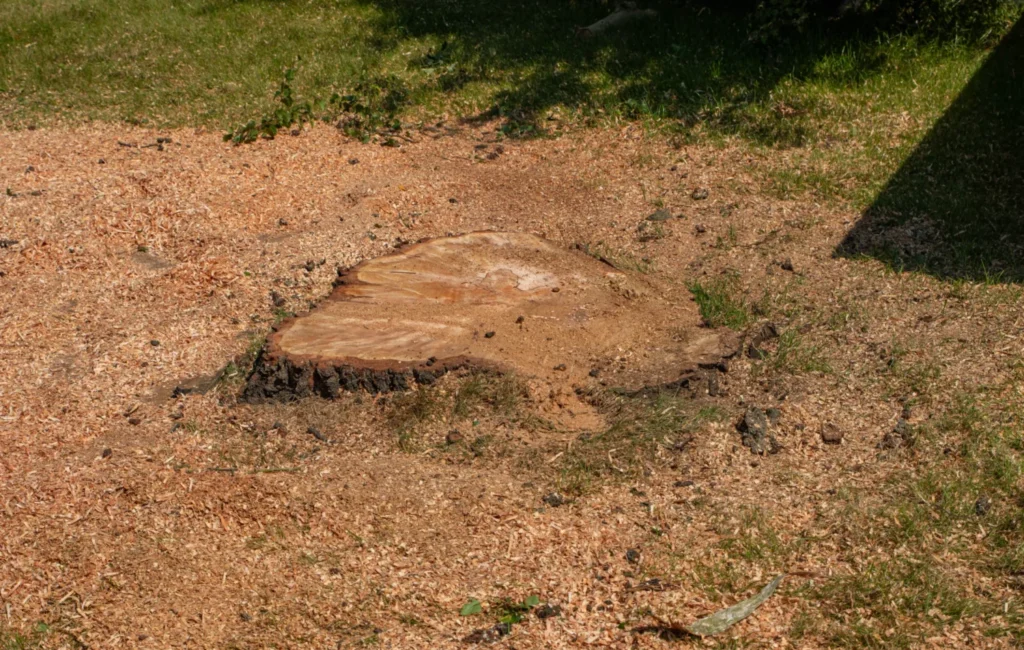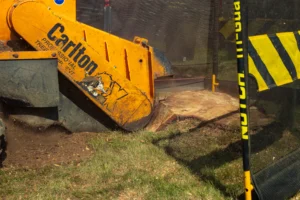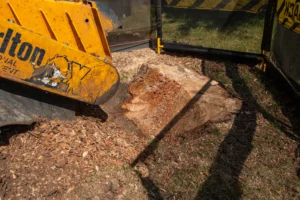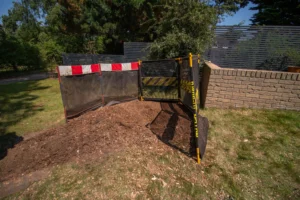

If you’ve recently had a tree removed, you may be wondering what to do about the stump left behind. That’s where stump grinding comes in – a clean and efficient way to remove tree stumps below ground level.
This article explains what to expect during a professional stump grinding job, from first contact to final tidy-up, so you know exactly how it works and how to prepare.
1. Initial Enquiry and Quotation
It all starts with a quote. Most tree surgery companies will ask for basic details:
- Stump size (diameter at ground level)
- Location (e.g. front garden, back garden)
- Access details (gate width, steps, etc.)
- A photo, if possible
For straightforward jobs, many companies can provide a quote based on this information alone, eliminating the need for a site visit.
2. Scheduling and Preparation
Once you’re happy with the quote, a date and time will be arranged. Ahead of the visit, you might be asked to:
- Ensure access through any gates is clear
- Move garden items or furniture
- Keep pets indoors for safety
Professionals will typically confirm the plan in advance and flag any potential issues that may impact the work.
3. Arrival and Set-Up
On the day, the team will inspect the site and prepare the area. Safety is a top priority. Expect:
- Barriers or boards to protect nearby plants or lawns
- A walkaround to confirm stump position and depth
- Checks for underground utilities if required
The grinding machine is typically small enough to fit through standard garden gates, provided access is level and wide enough. However, larger stumps may require larger machinery.
4. Grinding the Stump
The operator uses a powerful rotating wheel to chip away the stump gradually:
- The machine is positioned over the stump
- The cutter wheel grinds back and forth to remove the wood
- Most stumps are ground down to 10–30cm below ground
Grinding is generally quick, with many domestic stumps removed in under an hour; however, larger or hardwood stumps may take longer.


5. What Happens to the Hole? Two Options
After the stump is ground down, you’ll be left with a shallow hole filled with woodchips and soil. There are two common approaches to dealing with it:
✅ Option 1: Leave the Woodchip Mulch In Place (Most Cost-Effective)
This is the standard approach—and the most cost-effective. The grindings can be left to settle naturally or raked to a level surface.
Pros:
- No extra cost
- Useful as mulch for borders or composting
- Settles into the ground over time
Cons:
- It may sink slightly as the material decomposes
- It is not ideal if you want to turf or pave the area immediately
✅ Option 2: Remove Grindings and Refill with Topsoil
This involves clearing out the grindings and replacing them with fresh topsoil, especially if you want to replant or lay new turf straight away.
Pros:
- Immediate re-use of the area
- Smoother, more stable surface
Cons:
- Usually costs extra
- Requires more time and materials
Ensure that you discuss your preference with your contractor before the job, as some may include this option, while others charge separately.

6. Clean-Up and Finishing
Once grinding is complete and the hole is dealt with, the area will be tidied up. You’ll be left with:
- A stump-free surface
- Either a mulched hole or fresh topsoil
- A safe, level space that’s ready to settle, replant, or landscape
Photos credited to MB Trees (East Anglia) Ltd, Stump grinding service




